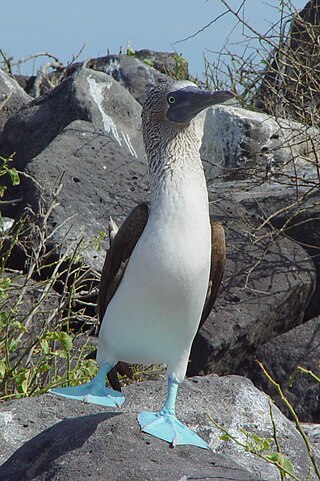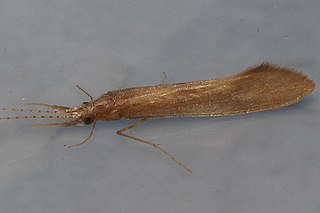
Mackerel is a common name applied to a number of different species of pelagic fish, mostly from the family Scombridae. They are found in both temperate and tropical seas, mostly living along the coast or offshore in the oceanic environment.

Herring are forage fish, mostly belonging to the family of Clupeidae.

The International Union for Conservation of Nature (IUCN) Red List of Threatened Species, also known as the IUCN Red List or Red Data Book, founded in 1964, is an inventory of the global conservation status and extinction risk of biological species. A series of Regional Red Lists are produced by countries and organizations, which assess the risk of extinction to species within a political management unit.

A booby is a seabird in the genus Sula, part of the family Sulidae. Boobies are closely related to the gannets (Morus), which were formerly included in Sula.

Sardine and pilchard are common names for various species of small, oily forage fish in the herring family Clupeidae. The term sardine was first used in English during the early 15th century; a somewhat dubious folk etymology says it comes from the Italian island of Sardinia, around which sardines were once supposedly abundant.

An IUCN Red List Critically Endangered species is one that has been categorized by the International Union for Conservation of Nature as facing an extremely high risk of extinction in the wild. As of 2021, of the 120,372 species currently tracked by the IUCN, there are 8,404 species that are considered to be Critically Endangered.

A species that is extinct in the wild (EW) is one that has been categorized by the International Union for Conservation of Nature as known only by living members kept in captivity or as a naturalized population outside its historic range due to massive habitat loss.

Villa's gray shrew is a shrew native to northeastern Mexico, where it is called musaraña.
Triaenodes phalacris is an extinct species of species caddisfly in the family Leptoceridae. It was endemic to the United States.

Triaenodes tardus is a species of long-horned caddisfly in the family Leptoceridae. It is found in North America.
Triaenodes flavescens is a species of long-horned caddisfly in the family Leptoceridae. It is found in North America.

Triaenodes baris is a species of long-horned caddisfly in the family Leptoceridae. It is found in North America.









